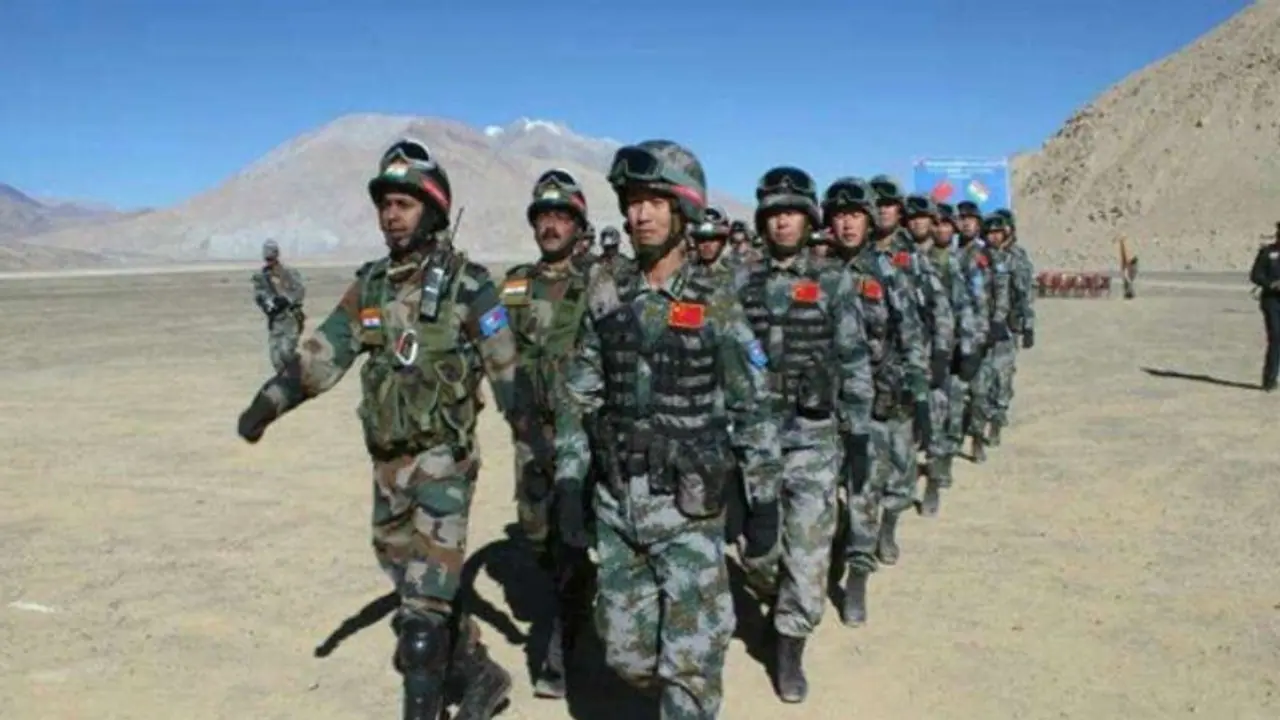Both countries still need to take several steps to maintain the pre-April 2020 status quo. Besides the disengagement process, the troops will have to carry out de-escalation and de-induction processes to get to the pre-April 2020 levels.
The disengagement process, which has started in the areas of Gogra-Hot Springs (PP-15) just days before the Shanghai Cooperation Organisation (SCO) meeting in Uzbekistan in which Prime Minister Narendra Modi and Chinese President Xi Jinping will also participate, will be completed by September 12.

Also Read: From the IAF Vault: Story of the first flight over Mount Everest
The forces of India and China will have to dismantle all temporary and allied infrastructures that the two sides have created in the wake of the border standoff in the region since May 2020. The two sides will also mutually verify them.
In reply to a media query, India's foreign ministry said that the disengagement process in this area started as per the agreement on September 8 at 0830 hours and will be completed by September 12.
Foreign Ministry spokesman Arindam Bagchi said the two sides would cease forward deployments in this area in a coordinated, phased and verified manner, resulting in the return of the troops of both countries to their respective areas.
While stating that the landforms in Patrolling Point 15 area will be restored to the pre-stand-off period by both sides, the spokesman said that the agreement ensures that there will be no unilateral change in status quo and that the Line of Actual Control in this area is strictly observed and respected by both sides.
India and China have also agreed to take the dialogue forward, resolve the remaining issues along LAC, and restore peace and tranquillity in the border areas.
What next?
Both countries need to take several steps to maintain the pre-April 2020 status quo. Besides the disengagement process, the troops will have to carry out de-escalation and de-induction processes to get to the pre-April 2020 levels.
Since the beginning, India has been insisting on discussing pending issues like Depsang and Demchok. However, the Chinese side has been refusing, maintaining that they are not a part of the current standoff.
At Depsang, China's Peoples Liberation of Army has been blocking Indian forces from patrolling in the area since May 2020. The two sides have a dispute over a 992-square km plateau in Depsang. It should be noted that India and China share an 832-km-long LAC in eastern Ladakh. The LAC is undemarcated on the ground.
Timed ahead of Modi-Xi meeting at SCO?
Strategic affairs expert Major General Ashok Kumar (Retd) said, "The relationship between India and China had moved to its lowest ebb post LAC incursion by China in May 2020. India had made it clear that the status of the border will decide the state of the bilateral relationship between the countries."
Traversing through the Galwan clash, the capture of Kailash ranges on the Southern bank of Pangong Tso and multiple talks, China largely reverted back to pre-May 2020 positions in all areas except Hot Spring, Depsang plains and Demchok, he said.
According to Maj Gen Ashok Kumar, "Since the head of states will meet during SCO meet slated in this month, the possibility of a direct meeting between Modi and Xi Jinping cannot be ruled out. The agreement on Hot spring could be a step in that direction, and who knows, both the leaders are able to resolve the issue for the larger good."
Also Read: From the IAF vault: The engineer from Ladakh who made an airstrip in 26 days
